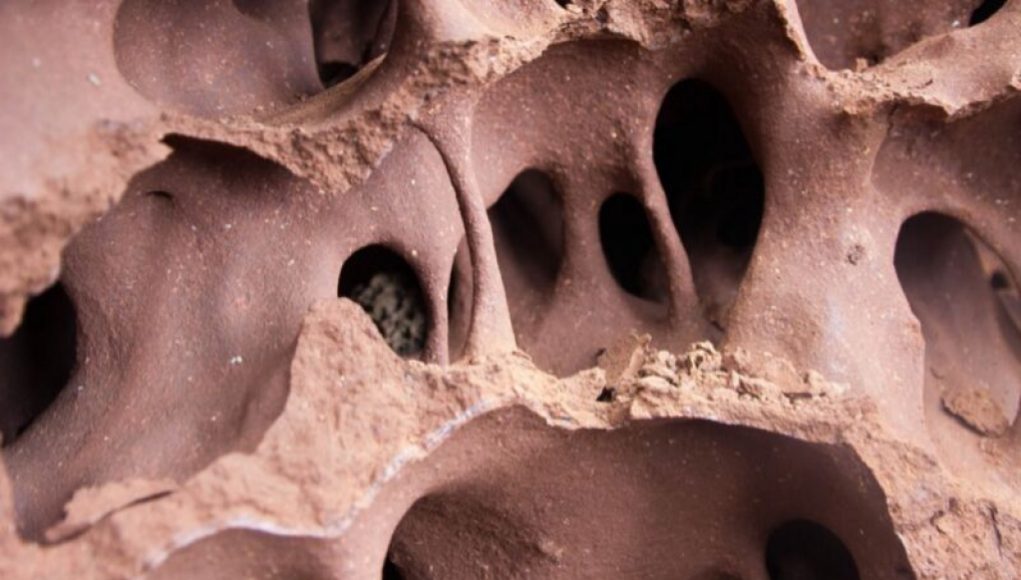Discover the fascinating world of termite mounds and their potential to revolutionize architecture! For years, scientists have been studying these mounds to understand how they function as natural climate control systems. And now, a new paper published in the journal Frontiers in Materials offers exciting evidence that these mounds, nests, and tunnels work together like a lung.
One of the most famous examples of termite-inspired architecture is the Eastgate Building in Zimbabwe. Designed by architect Mick Pearce in the 1990s, this commercial and shopping complex uses less than 10% of the energy consumed by a conventional building of its size. How? By mimicking the cooling and heating principles used in termite mounds, which serve as fungus farms for the termites.
But not all termite mounds are the same. Different species build different types of mounds, which makes identifying universal principles a bit tricky. For instance, a species common to Senegal and Guinea doesn’t farm fungus, so their mounds lack the distinctive chimneys and window-like openings of the Zimbabwe termite mounds. Instead, they have pores that help the structure “breathe” and dry out faster after heavy rains.
So, how do termite mounds regulate temperature and humidity? Physiologist Scott Turner and Rupert Soar of Nottingham Trent University have proposed an integrated-system model that incorporates the mound, the underground nest, and the complex network of excavated tunnels known as the “egress complex.” This system acts as a functional analog of a lung, letting in oxygen and letting carbon dioxide escape.
But the egress complex does more than that. It also promotes flows of air, heat, and moisture in architectural design. By preserving the delicate balance of temperature and humidity inside a building, without impeding the movement of stale air outwards and fresh air inwards, this structured interface allows for the exchange of respiratory gases.
So, the next time you see a termite mound, take a closer look. It might just inspire the next generation of energy-efficient buildings!
In a study by researchers at Berkeley Lab, a solution for hot buildings looking to reduce their dependence on air conditioning was revealed – structure design inspired by the networked tunnels of termite mounds.
Termites construct highly intricate mound systems with air passages that channel cool air into and hot air out of their living quarters. This efficient design has enabled them to regulate and maintain constant temperatures of around 86°F within their mounds, despite significant outdoor temperature fluctuations.
In an effort to save energy and
be greener, architectural engineering researchers at Berkeley Lab looked to see if this natural cooling concept could be applied to buildings. Through a two-year study, they determined that modern structures designed with channels inspired by termite mounds could regulate temperatures without air conditioning.
The Berkeley Lab team developed their own “termite-inspired air conditioning” technique which utilizes an extensive network of tubes. These tubes would be installed within the walls and ceilings of the building and connected to fans. Hot air would be extracted from the living quarters and easily dispersed through an extensive system of “spikes,” not unlike those found in termite mounds.
The tunnel system not only cools the building by allowing hot air to escape but also encourages a natural airflow. This prevents stale, warm air from becoming trapped in the building and better circulates oxygen throughout the structure.
The advantages of this “termite-inspired air conditioning” principle are numerous. It is a low-maintenance, energy-efficient, and cost-effective solution for regulating a structure’s interior temperature on hot days. It is also a greener alternative to air conditioning, as it does not rely on any artificial energy sources.
While more research is needed to test this method in a large-scale application, the study by Berkeley Lab proves that nature can, in fact, provide a viable and sustainable technology for cooling buildings. If successful, buildings may soon be able to stay cool without air conditioning by mimicking the natural cooling effect of termite mounds.




















